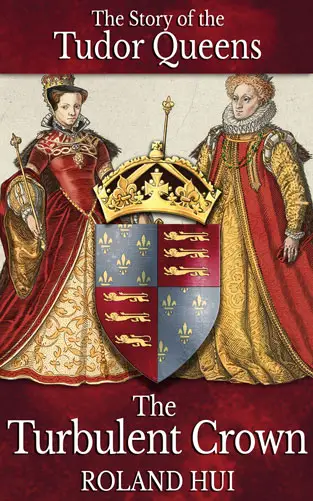December 8
Today, we have an excerpt from Roland Hui's book The Turbulent Crown: The Story of the Tudor Queens, thank you Roland for sharing this with us.
The Coronation of Elizabeth I, January 1559
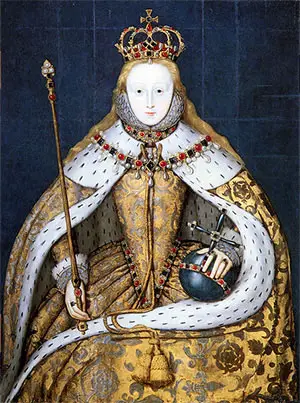
The Tudors were great believers in astrology. Henry VII, concerned about the longevity of his new dynasty, had commissioned horoscopes of his family. In the next reign, Henry VIII, anxious for a son, also sought reassurance from those who read the heavens. Of his children, Edward VI readily acknowledged celestial phenomena as manifestations of the ‘glory of God and His Power over the whole world', while Mary, in that same belief, heeded omens foretelling her brother’s early demise. Elizabeth, no different from her predecessors, placed her trust in the stars as well. She left the date of her crowning to the mystic Doctor John Dee. Based on the Queen's nativity, Dee chose 15 January 1559 as the most auspicious day.
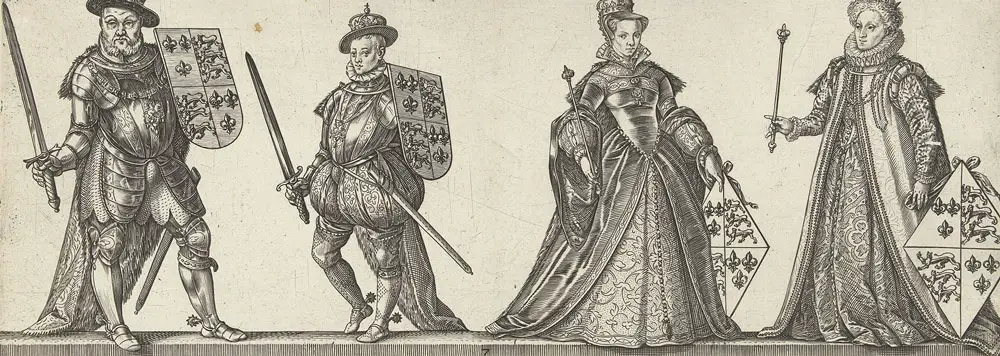
In preparation, Elizabeth arrived at the Tower of London a few days earlier. She ‘was seen but by very few persons', but on 14 January, thousands came to pay her tribute. Happily, the ‘foul weather’ of late had abated, and there was only a light snowfall as the parade of knights, nobles, clergy, and the rest of the Queen’s entourage emerged from the great fortress. Behind the wooden barricades, the citizens stood deep in slush to catch a glimpse of the new mistress of England. She did not appear till near the tail end of the procession, but she was well worth their wait. Seated in a litter covered in brocade, Elizabeth was dressed in white cloth of gold, and upon her head was a jewelled crown. With her slender build, reddish hair, pale skin, and aquiline features, she was a striking and majestic figure.
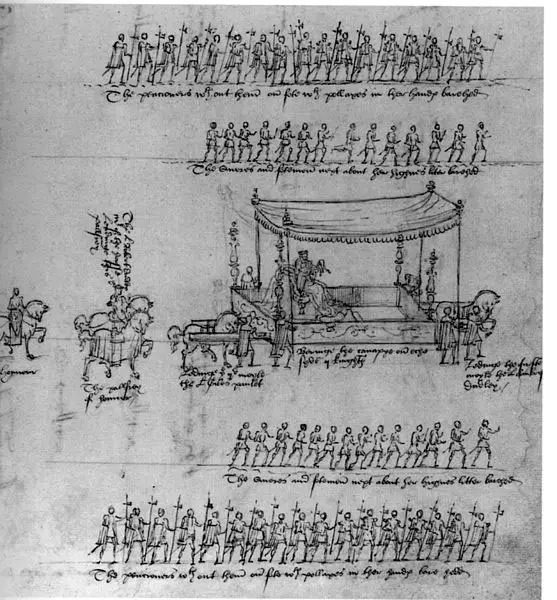
Elizabeth’s deportment was in marked contrast to her sister’s. Unlike Queen Mary, who rode to Westminster looking uncomfortable holding up her head, Elizabeth was completely at ease. Perhaps remembering Mary’s dilemma with her heavy crown, she may have chosen a less cumbersome one to wear. Unhampered, Elizabeth made good use of her hands – much admired for their whiteness and elongation - holding them up to express her joy and thanks to the people.
While Il Schifanoya, a Venetian observer, may have censured Elizabeth for ‘exceed[ing] the bounds of gravity and decorum', her subjects were delighted by her openness. Whenever they called out to her, wishing her well and asking God’s blessing upon her, she would answer them back in kind. Elizabeth did not hold back her ‘loving behaviour'. Anytime a citizen offered her a gift or made a private supplication of her, the Queen had her litter stopped to thank or speak to the individual. She also gave her complete attention to the various pageants she came upon. At Fenchurch, she paused to hear the speech of a child welcoming her, and she did likewise at a triumphal arch depicting ‘The Uniting of the Two Houses of Lancaster and York'. It was of particular interest to Elizabeth as it set forth her right to the Crown. At the bottom of the tableau were her grandparents Henry VII and Elizabeth of York; in the centre, Henry VIII and ‘the right worthy Lady Queen Anne’; and at the top was a child dressed up as Elizabeth herself. Because the arch was set far back and the noise great, the Queen made a special request ‘to have the matter opened unto her'. She wanted ‘to hear all that should be said unto her', at the same time making certain that her subjects understood the significance of the display as well.
The next pageant, ‘The Seat of Worthy Governance’, was an allegory as to how Elizabeth should rule. A representation of her was flanked by the figures of Pure Religion, Love of Subjects, Wisdom, and Justice. Vanquished before them were their enemies: Superstition, Rebellion and Insolence, Folly and Vainglory, and Adulation and Bribery. It was explained to all that Elizabeth would rule long and prosperously, ‘so long as she embraced Virtue and held Vice underfoot'.
But was what was meant by 'Pure Religion', and what by 'Superstition'? Even with the death of Queen Mary, England was still a Catholic country by law. Would Elizabeth continue to abide by the religion of the State, or would she dissent in following her conscience? Her inclination and what direction her government would take were demonstrated at a subsequent pageant staged by the Little Conduit. It consisted of two sections. On one side was ‘A Decayed Commonwealth’ with a ragged figure weeping below a withered tree, and on the other ‘A Flourishing Commonwealth’ where a comely youth stood beneath a tree ‘very fresh’ surrounded by blooming flowers. As Elizabeth and the people watched, old Father Time emerged from a cave in the middle. With him was his daughter Truth with the English Bible in her hands. When it was presented to the Queen, she ‘kissed it and with both her hands held up the same, and so laid it upon her breast, and gave thanks to the city therefore'. Elizabeth’s reverence for the Bible in English, and her exclamation that she would read it ‘most diligently', ended anyFather ambiguity about her faith.
Elizabeth’s Protestantism was further emphasized at a pageant on Fleet Street. Sitting upon a great throne, and crowned and sceptred like the Queen herself would soon be was the Biblical Deborah, ‘the judge and restorer of the House of Israel'. She was hailed as a ‘worthy precedent’ to Elizabeth for her victory over King Jabin of Hazor and his oppressing Canaanites. With Elizabeth compared to Deborah, needless to say, Jabin stood for the Pope, and the Canaanites the Catholic clergy.
Still, England’s new Deborah was required to undergo the centuries old coronation rituals as her ancestors did on 15 January. There had been some difficulty in finding a clergyman willing to perform the actual crowning. The Archbishop of Canterbury, Reginald Pole, was dead, and the highest churchman after him, the Archbishop of York, Nicholas Heath, declined. His conscience, he insisted, would not permit him to omit the Elevation of the Host, as Elizabeth demanded he must, at the coronation Mass. The Bishop of Carlisle, Owen Oglethorpe, had already been reprimanded for doing so before the Queen at Christmas. As nothing could persuade Heath to change his mind, a reluctant Oglethorpe was ordered to take his place.
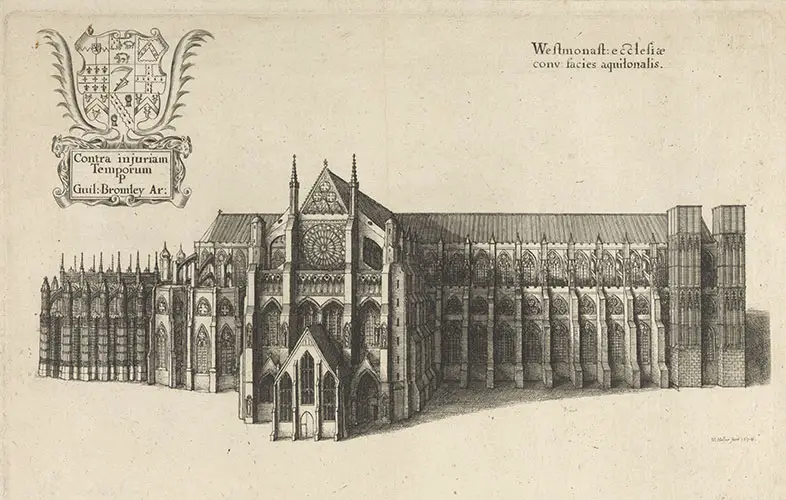
In Westminster Abbey, Elizabeth, was led up to a ‘lofty tribune’ set between the high altar and the choir. After she was presented to the people at the four corners of the stage, Elizabeth descended and made her offering at the altar. She then prostrated herself upon cushions to be prayed over and was subsequently anointed. Later, she was heard to complain that the holy oil, which her sister had taken pains to obtain from Flanders, was putrid. Enthroned, she then received the symbols of her authority - the sword, the spectre, and the orb. A great hush came over the abbey as the Bishop of Carlisle solemnly set three crowns – gold for England, silver for France, and iron for Ireland – each in turn upon the Queen’s head.
At the ensuing Mass, the Bishop read out the Epistle and the Gospel in Latin, and then ‘in the vulgar tongue’ as he was ordered to. But when it came to the most solemn part of the service, Oglethorpe was as stubborn as he was at Christmas. To the Queen’s annoyance, he would not perform the ceremony ‘without elevating the Host or consecrating it'. All Elizabeth could do was to temporarily remove herself into a transverse by the side of the altar; an act of protest like one she was forced to make when Oglethorpe disobeyed her before.
The day after the coronation was set aside for tournaments in the new Queen’s honour. But as ‘Her Majesty [was] feeling rather tired', the celebrations had to be postponed. Exhausted by days of ceremony, Elizabeth withdrew herself from the public eye, preparing herself for what would certainly be a contentious Parliament.
Roland Hui is the author of The Turbulent Crown: The Story of the Tudor Queens, which is available in paperback, e-book and audio book. He blogs about Tudor art and personalities at: Tudor Faces: https://tudorfaces.blogspot.com
